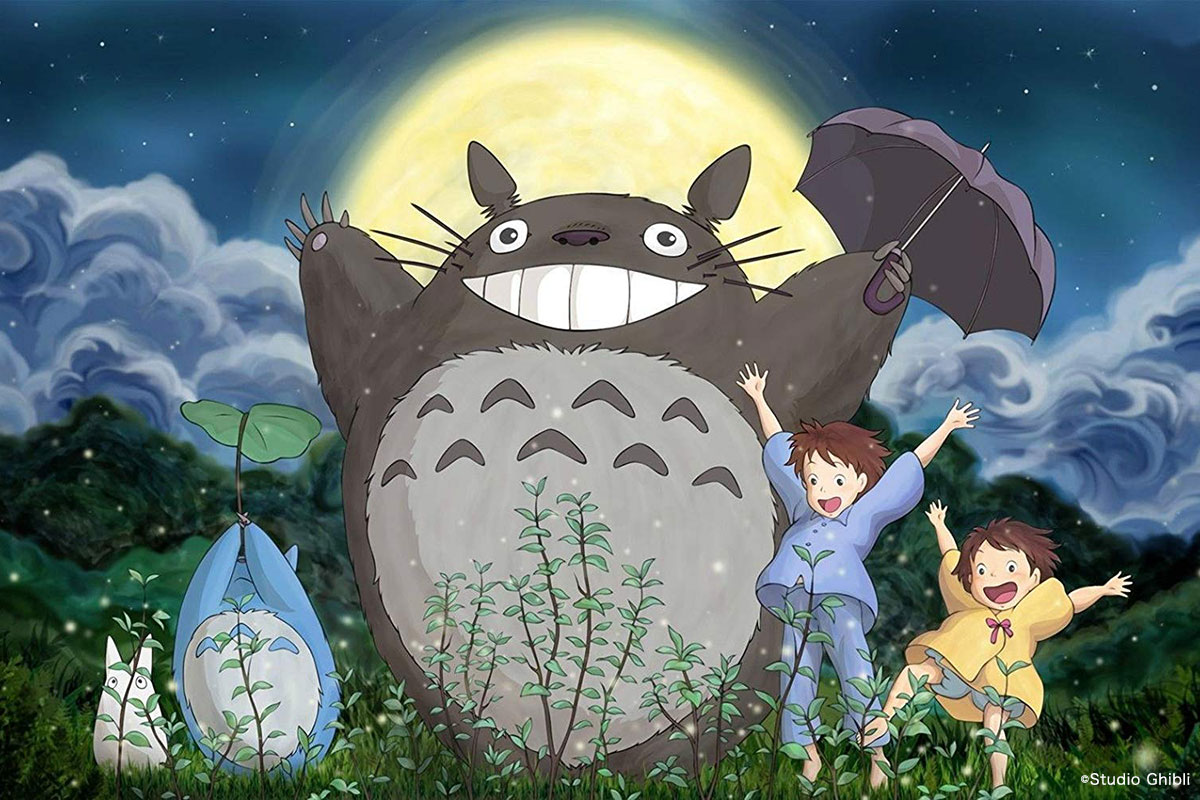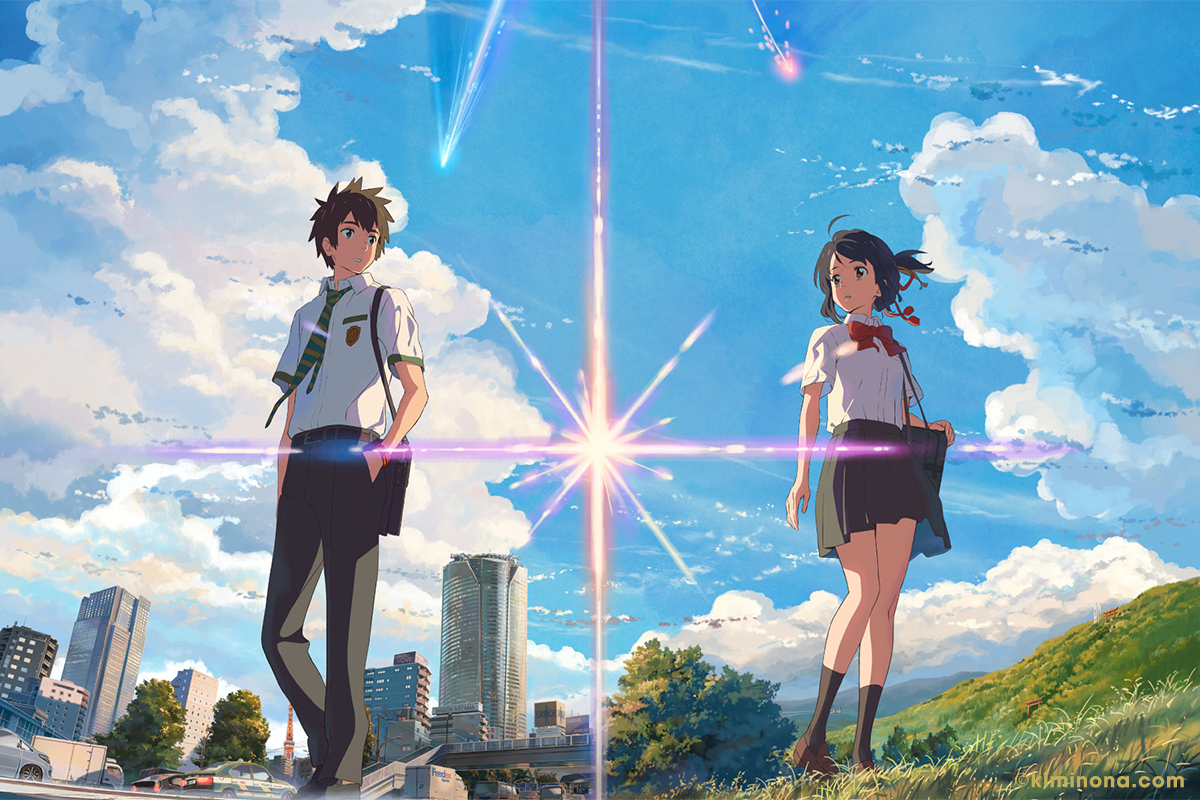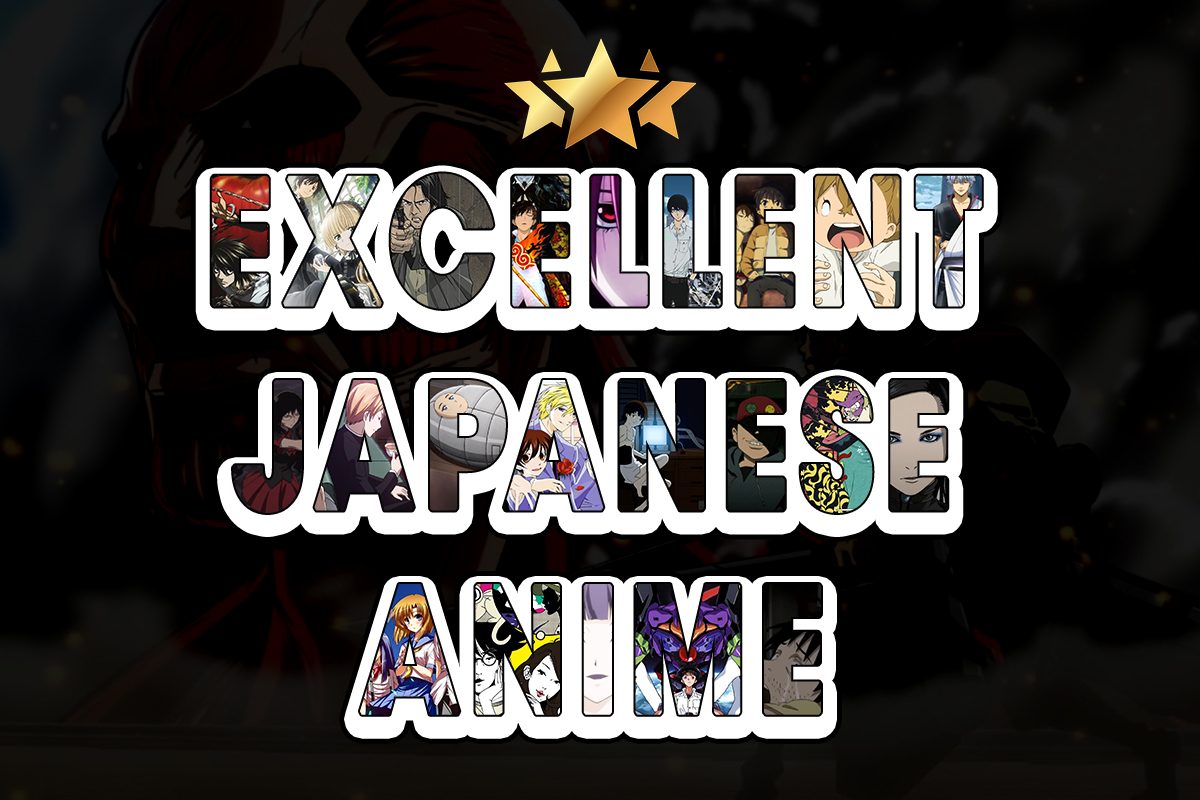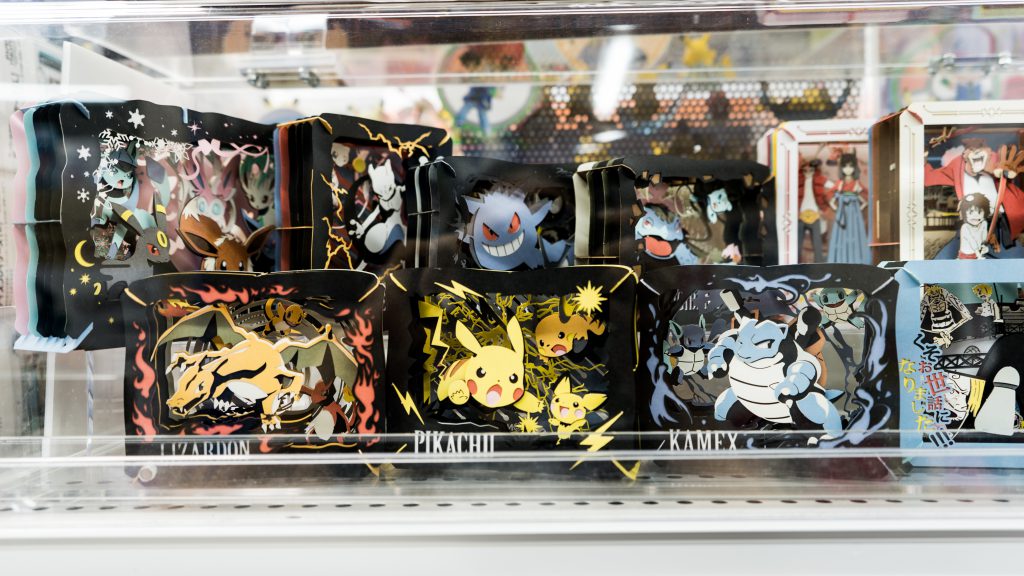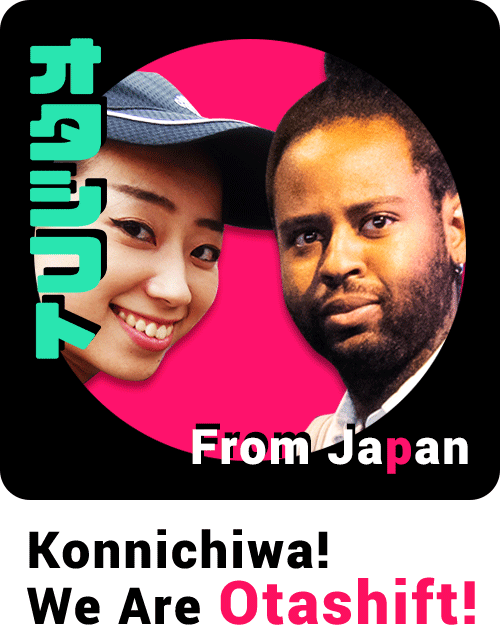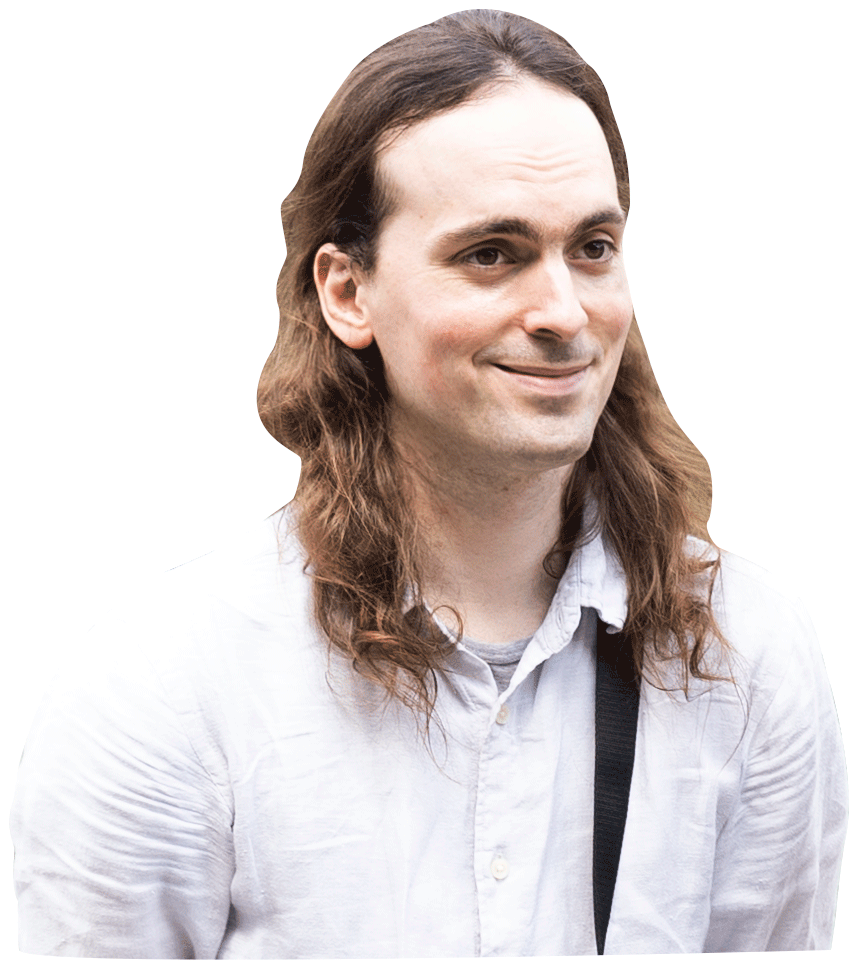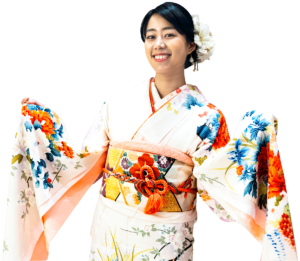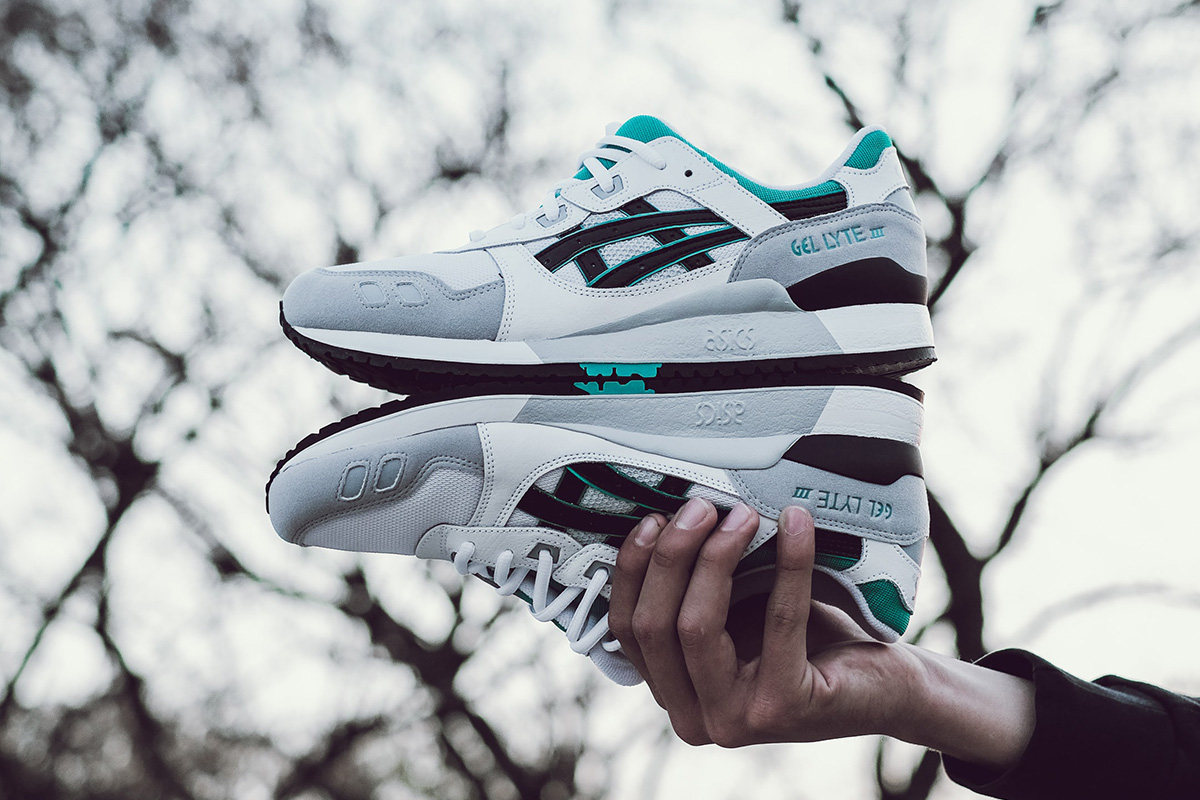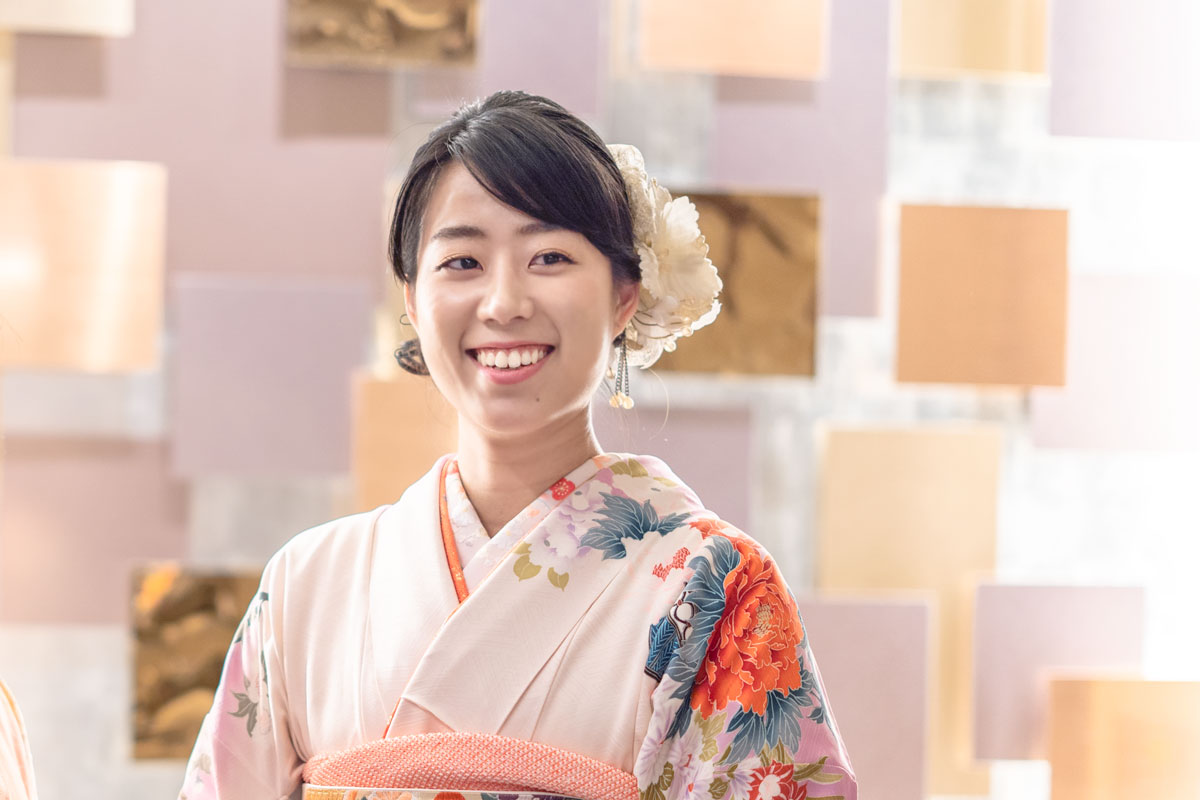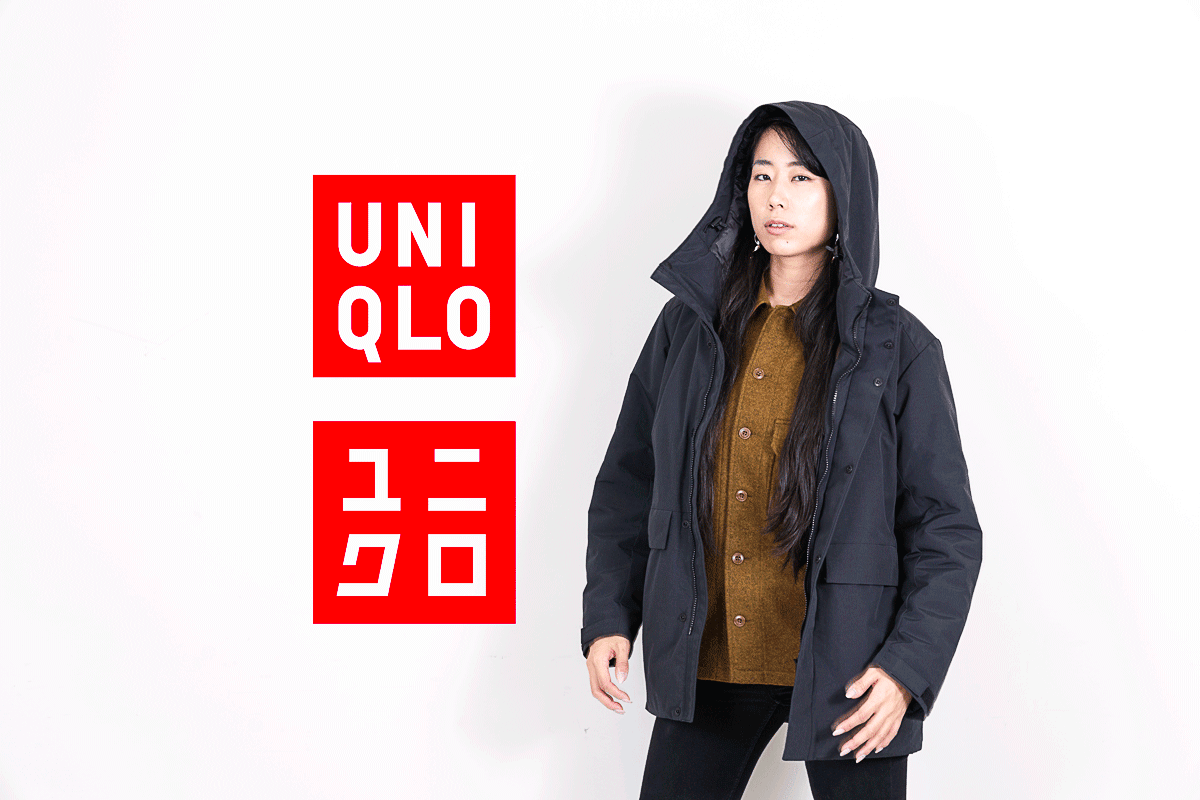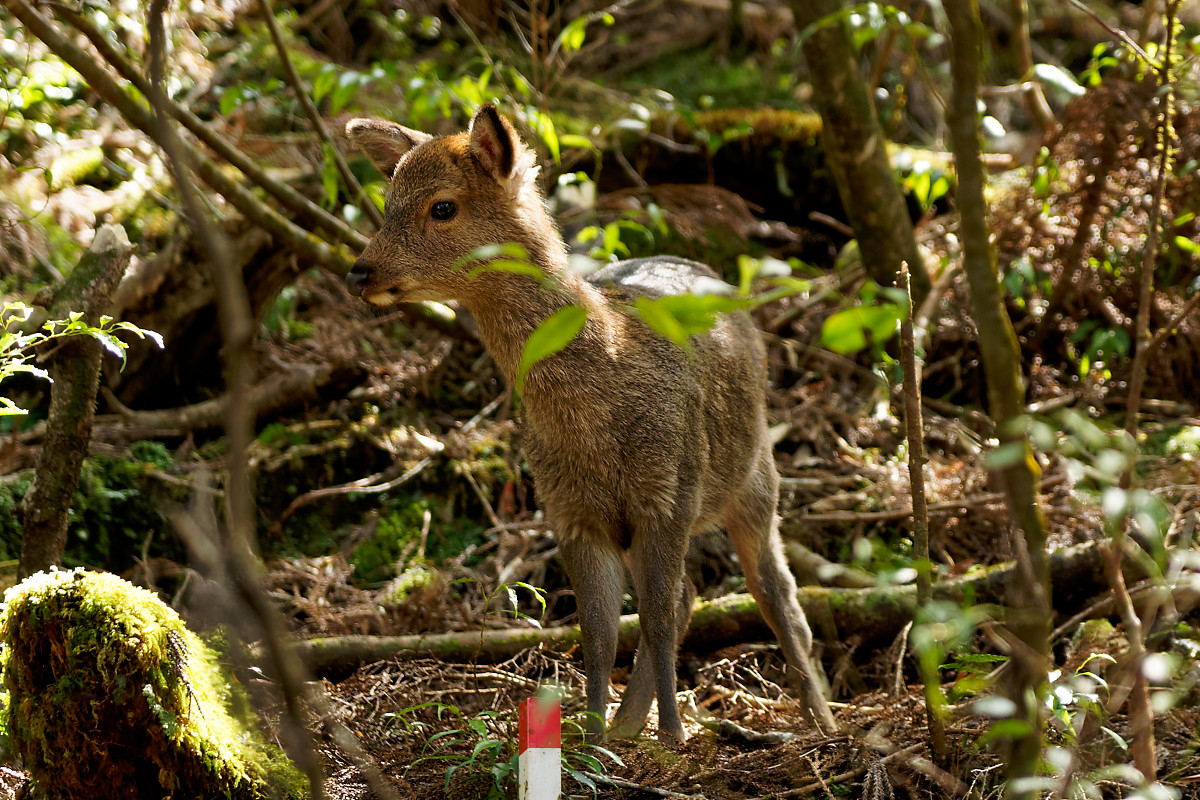Studio Ghibli (スタジオジブリ) is probably the most famous and beloved Japanese animation studio in the world. Studio Ghibli has produced over its 30+ years some of the best movies, animated or not. Those movies are not only well animated, and were ahead of their time, they were also profound, with deep meaning, and caricaturing societal issues.
Hayao Miyazaki (宮崎駿), one of the founders of Ghibli has gone down in history as one of the most defining directors in cinematography in the 20th and 21st centuries, and is likely the most famous Japanese person internationally of our era, maybe ever.
STUDIO GHIBLI
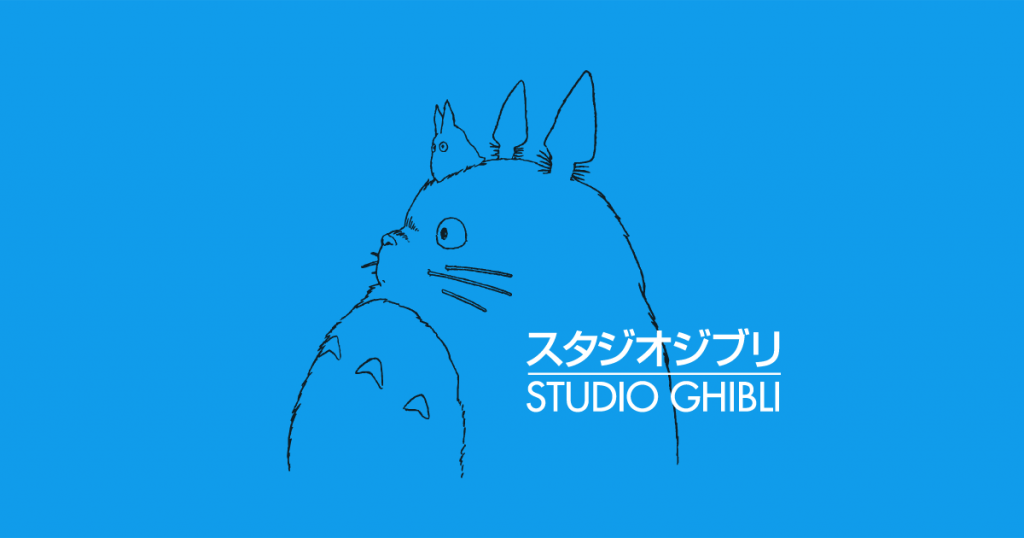
Studio Ghibli is an animation studio founded in 1985 by animator and director Hayao Miyazaki, director Isao Takahata, and producer Toshio Suzuki. Miyazaki and Takahata had previously worked for Toei Animation, where many of Japan’s animation godfathers got their start. While at Toei, Isao Takahata was given his first project as a lead director, The Great Adventure of Horus, Price of the Sun (1968). The key animator for this film for Hayao Miyazaki, it was his first major project as well.
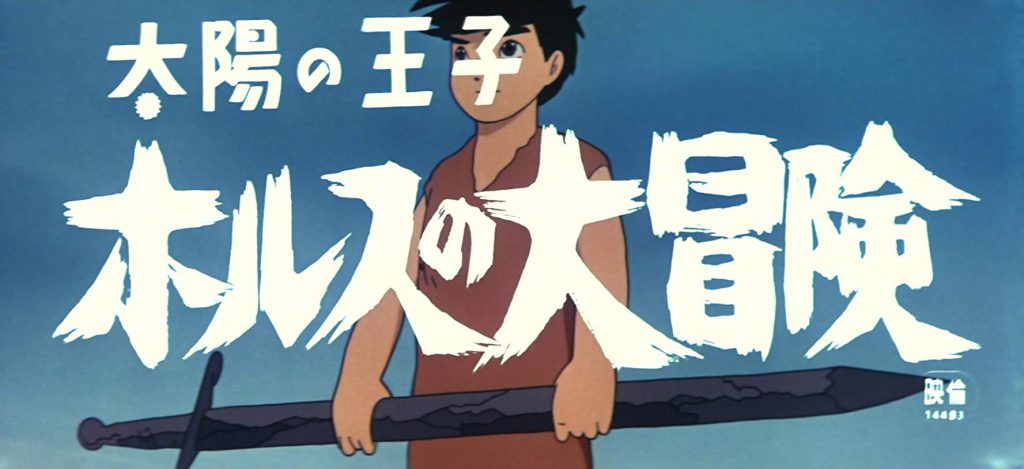
Although that movie is now considered a classic, and a defining film in the long history of Japanese animation, it was a flop when it came out. As a result, Takahata was demoted from his position of lead director, and he and Hayao Miyzaki left Toei Animation two years after. From then, they collaborated on various projects for different studios, the anime adaptation of Monkey Punch’s Lupin III, and Future Boy Conan.
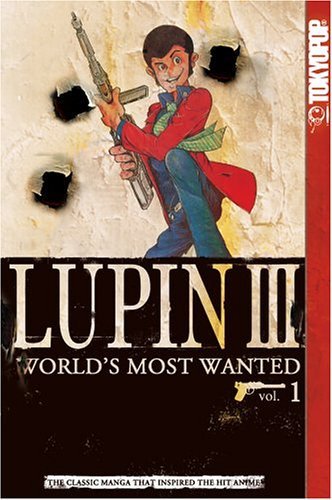
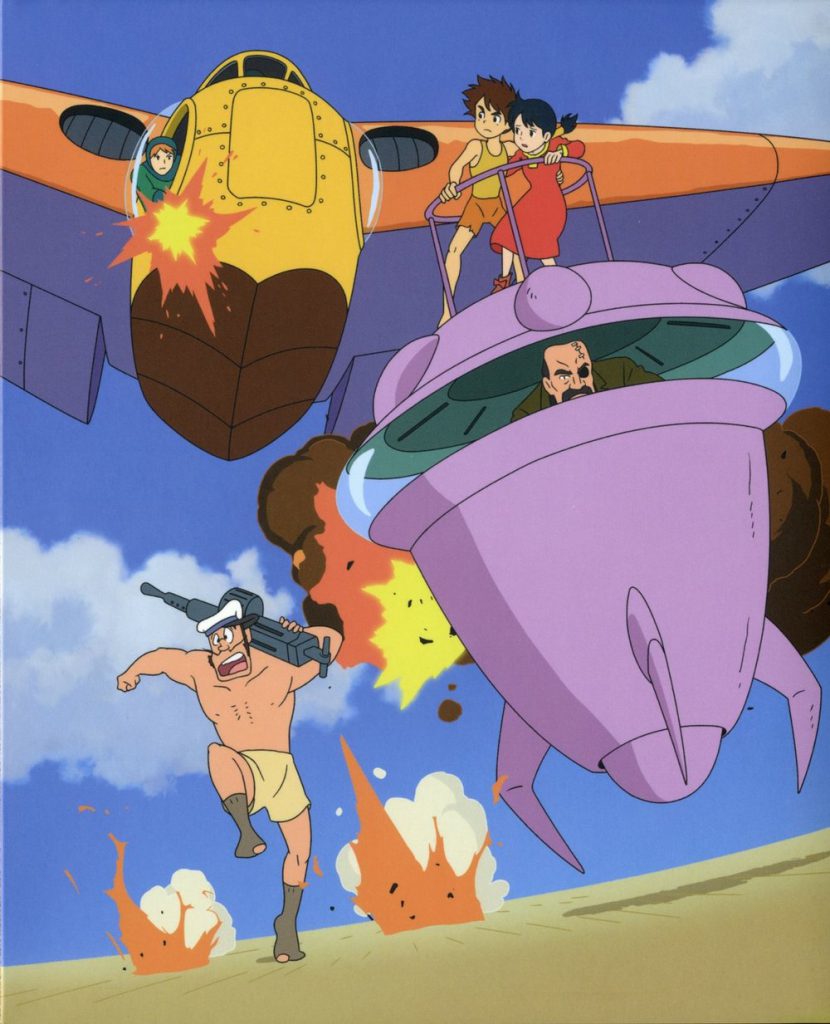
The catalyst behind the creation of Studio Ghibli, however is Nausicaä of the Valley of the Wind (1985), which in my opinion is to date, Hayao Miyazaki’s best film. Nausicaä is an epic, science fantasy based on a seven-volume manga written and illustrated by Hayao Miyazaki. Although it is not a Studio Ghibli movie, Nausicaä’s success is what lead to the creation of the famed animation studio, and is often considered a Ghibli movie because of that. The success behind the movie Nausicaä is due to the manga, whose first two volumes were serialized in Animage where Toshio Suzuki worked as an editor. Following the success of the movie, Hayao Miyazaki and Toshio Suzuki who was part of the production team founded Studio Ghibli, and invited Isao Takahata to join the founding team of the studio.
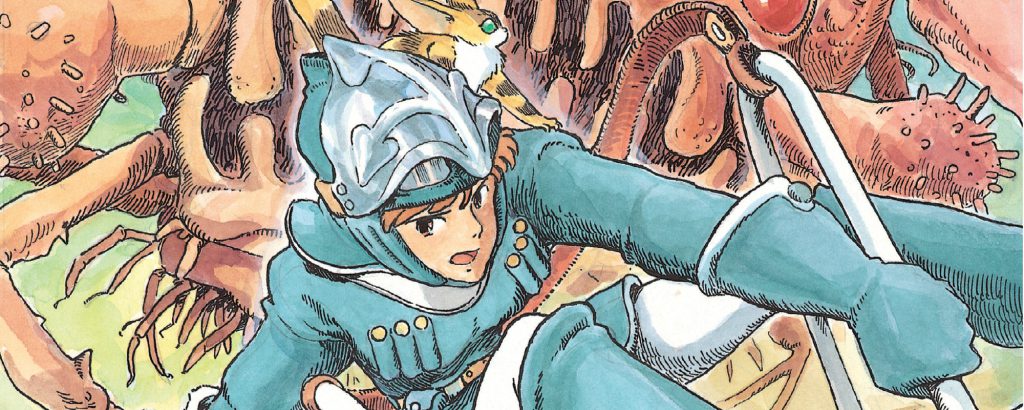
Studio Ghibli movies are mostly directed by Hayao Miyazaki, while Isao Takahata has directed a few himself, and a low portion of their portfolio have been made by other directors, including two by Goro Miyazaki, Hayao’s son.
While each director has their own style, and each director changes their style over time, and from movie to movie, some aspects are proper to all Studio Ghibli movies. Studio Ghibli movies tend to try to portray the different facets of human nature and are often a commentary on society, it’s problems, as well as man’s overexploitation of nature and of his fellow men. Miyazaki especially likes to have strong female protagonists, though the other directors also do a great job, and have done for decades, when the rest of anime, and cinema followed the trope of the weak, helpless female character.
HAYAO MIYAZAKI: CO-FOUNDER OF STUDIO GHIBLI
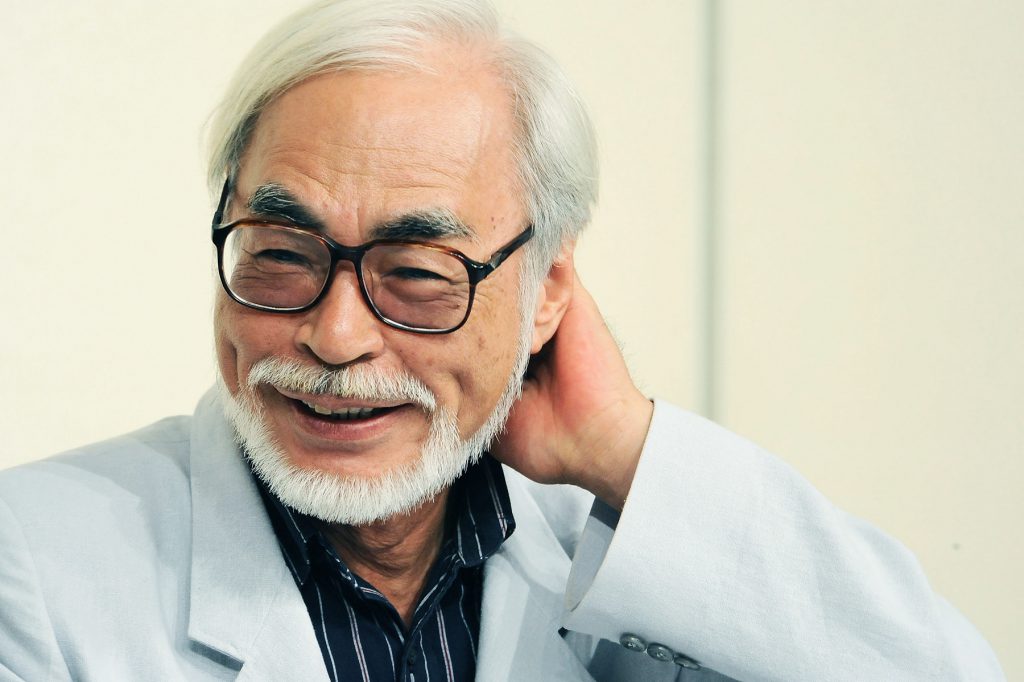
Hayao Miyazaki was born in Tokyo on January 5th, 1941. His father was the director of Miyazaki Airplane, which built parts for Zero fighter planes, and he grew up with a love for flying, which can be seen across the entirety of his work. Miyazaki went studied economics at Gakushuin University in Tokyo, then went on to take a position as an entry level animator at Toei Animation in 1963, which at the time, was Japan’s and Asia’s largest producer of animation. At Toei he met Isao Takahata, and Ota Akemi. Takahata, as mentioned above, ended up becoming his lifelong collaborator, while Ota became his wife.
After working on various projects at Toei, including: Wolf Boy Ken (1965) and Takahata’s Horus: Prince of the Sun (1968) among others. After leaving Toei in 1971, he co-directed Lupin III Part I along with Isao Takahata, and worked with him on other short films and TV series. His first feature film as a director wasn’t until 1979, when he directed Lupin the Third: The Castle of Cagliostro, which is a personal favorite of mine, and is a major influence of many current animators, most famously Pixar’s John Lasseter (Toy Story).
His second feature film, however, Nausicaä of the Valley of the Wind (1984), adapted from the manga he had previously serialized in the Animage magazine, and was the result of a collaboration between Miyazaki himself, Isao Takahata, and Animage’s Toshio Suzuki. The colossal success of Nausicaä prompted the three to found their own studio in 1985, which became Studio Ghibli. The name Ghibli was chosen by Hayao Miyazaki, borrowed from the name of a hot desert wind in the Libyan region, and the name of an Italian WW2 bomber aircraft.
The following year, in 1986, Studio Ghibli’s first anime movie was released: Laputa: Castle in the Sky. The movie grossed $8.1 million at the Japanese box office, and an additional $1.7 million in Hong Kong, the next year. It won Animage’s Anime Grand Prix in 1986, and marked the beginning on a long-lasting collaboration between Studio Ghibli and legendary composer Joe Hisaishi, who has gone on to work on other popular Ghibli movies, whose scores are known to all Japanese.
The year which however secured Studio Ghibli’s financial success, and a place in the hearts of people all over the world is 1988. Two key anime movies came out that year. One directed by Isao Takahata, and one directed by Hayao Miyazaki. Isao Takahata’s Grave of the Fireflies came out with huge critical success, depicting a somber side of WWII and its effects on the everyday lives of common people in Japan, who lived their lives between the routine bombings. Miyazaki’s film My Neighbor Totoro, was became a worldwide phenomenon, and is still along with Pikachu and Mario, one of Japan’s most consistently valuable properties over the decades. Totoro secured financial success because of the sale potential in merchandise of the Totoro character, which is found everywhere to this day in Japan, from stuffed toys, to keychains, and everything in between.
Over 30 years, 19 feature film, and one Academy award later, Studio Ghibli is to Japan what Disney is to the west. Children grow up watching Ghibli movies, know all the songs, have character derived merchandise, and Hayao Miyazaki stands at the top of the animation world hierarchy.
Hayao Miyazaki went into retirement after directing The Wind Rises (2013), at the age of 72. Although he is not a very public figure, he is known to sometimes gives interviews, and has shown to be against the current state of animation in Japan. Famously saying that one must spend time watching real people to properly portray them in anime, but that
Almost all Japanese animation is produced with hardly any basis observing real people
It’s produced by humans who can’t stand looking at other humans
[…] the industry is full of otaku!”.
THE CURRENT STATE OF STUDIO GHIBLI
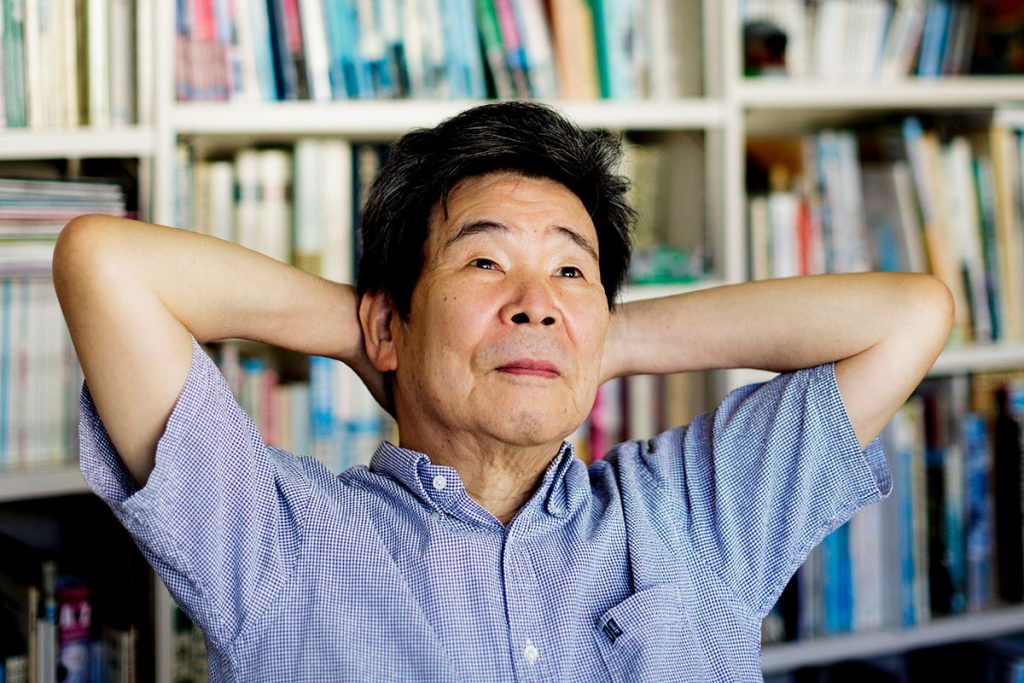
While Hayao Miyazaki alone does not makeup Studio Ghibli, he was a very central figure, and their main director. After his retirement following the release of The Wind Rises, Suzuki announced that Ghibli would be taking a short break to restructure and consider Studio Ghibli’s direction in the future. That had led to speculations Studio Ghibli would not produce a feature film. In addition, producer Yoshiaki Nishimura and director Hirosama Yonebayashi (The Secret World of Arriety, When Marnie Was There) left Ghibli in 2016 to found Studio Ponoc. Finally, Isao Takahata’s passing in 2018 means another central figure will be missing.
To date, since Hayao Miyazaki’s last feature film, Studio Ghibli has released only two films, The Tale of the Princess Kaguya (2013, Isao Takahata), and When Marnie Was There (2014, Hirosama Yonebayashi). And none since, except for a co-production of The Red Turtle (2016, Dudok de Wit).
In February 2017, Suzuki announced that Miyazaki would come out of retirement to direct a new feature film with Studio Ghibli, titled How Do You Live? With the release date to be announced, but is expected to be in the early 2020s.
GHIBLI MUSEUM, MITAKA
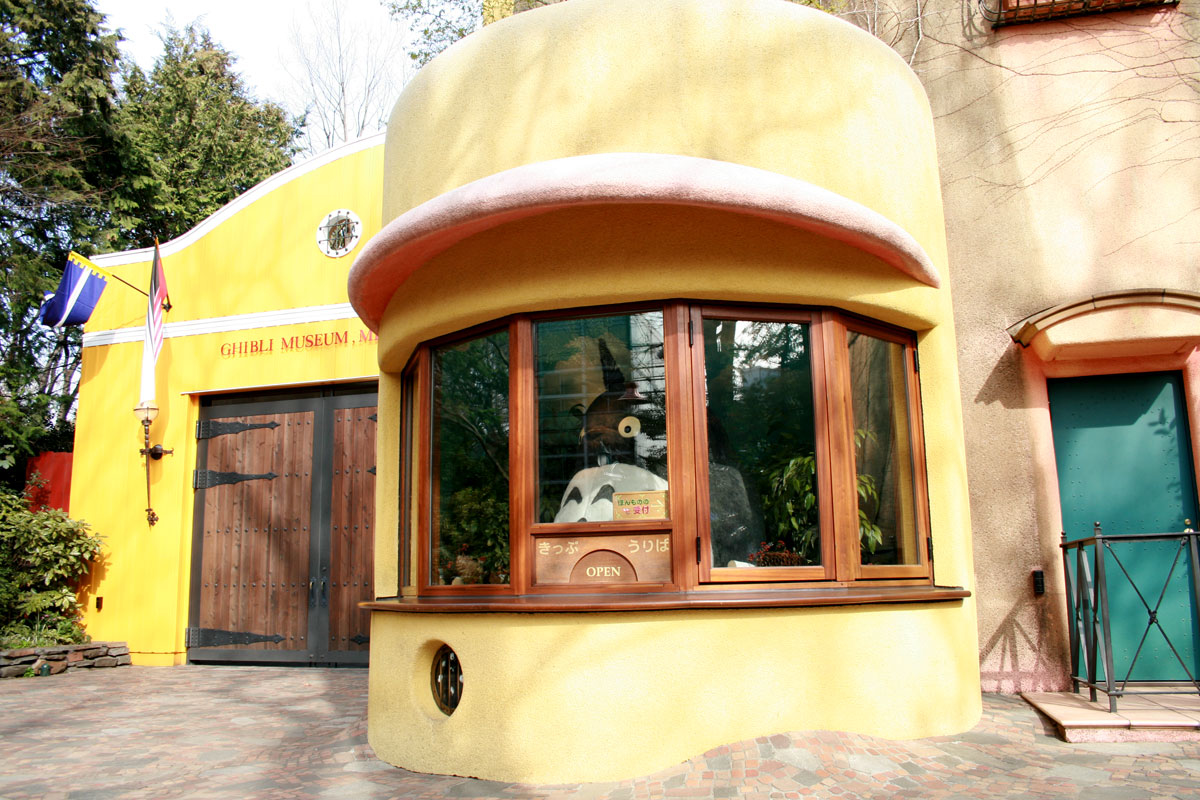
The Ghibli Museum is in the city of Mitaka in West Tokyo, about 30 minutes away from Shinjuku Station on the Chuo Line. The museum showcases the works of the studio. The museum was designed by Hayao Miyazaki himself, and is aimed at children. It contains an exhibition dedicated to the life of Miyazaki, gives access to his journals, drawings. There are exclusive films which can be previewed, as well as the many characters, and the equipment used to make them come to life.
The museum is a bit underwhelming to be honest, for an adult, but would probably be a lot of fun for the kids. In addition, it’s not too pricey and easy to access, so if you don’t mind the risk of not enjoying it too much, it’s not too bad a loss.
10:00 – 18:00. Closed on Tuesdays, Except: 2019: March 26,April 30, August 13, October 22, December 24 2020: February 11.
Mitaka Station (Chuo Line, Chuo Sobu Line, Narita Express), then walk 15 minutes, or take the shuttle bus to the museum from South Exit, Bus Station #9.
Over Age 19: ¥1,000 ($9), age 13-18: ¥700 ($6.30), age 7-12: ¥400 ($3.60),Age 4-6: ¥100 ($0.90) Free for visitors under 4.
STUDIO GHIBLI THEME PARK
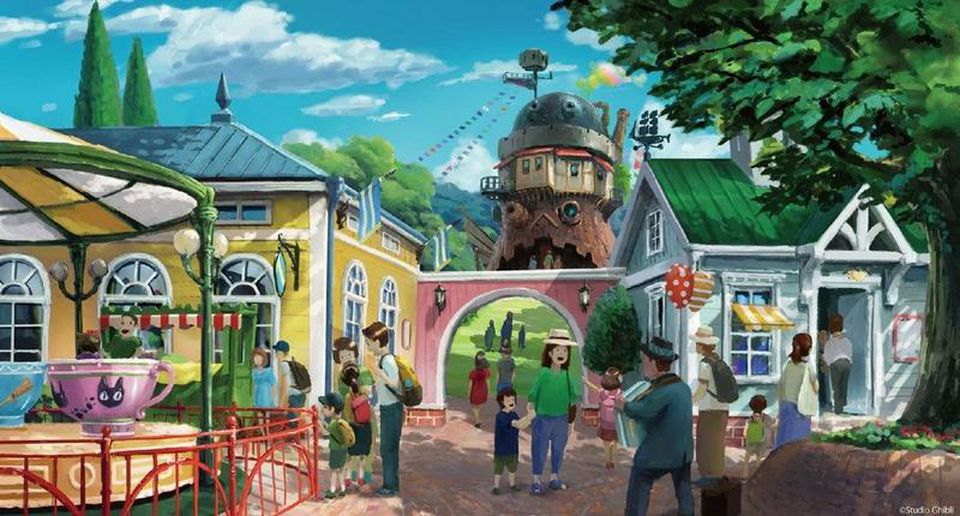
In May last year (2018), it was announced that a Studio Ghibli theme park is scheduled to open in 2022. The park is supposed to be a Disneyland-like park, only with the theme of Ghibli works, with rides based on popular movies like My Neighbor Totoro. The main gate is designed to look like the Howl’s Moving Castle buildings, and it is said to cater to nature lovers, with green spaces and trails being a prominent feature of the park.
The Studio Ghibli Theme Park will be built in Nagakute city in Aichi prefecture, on the grounds of the 2005 Aichi Earth Expo Memorial Park.
STUDIO GHIBLI FILMS YOU MUST WATCH
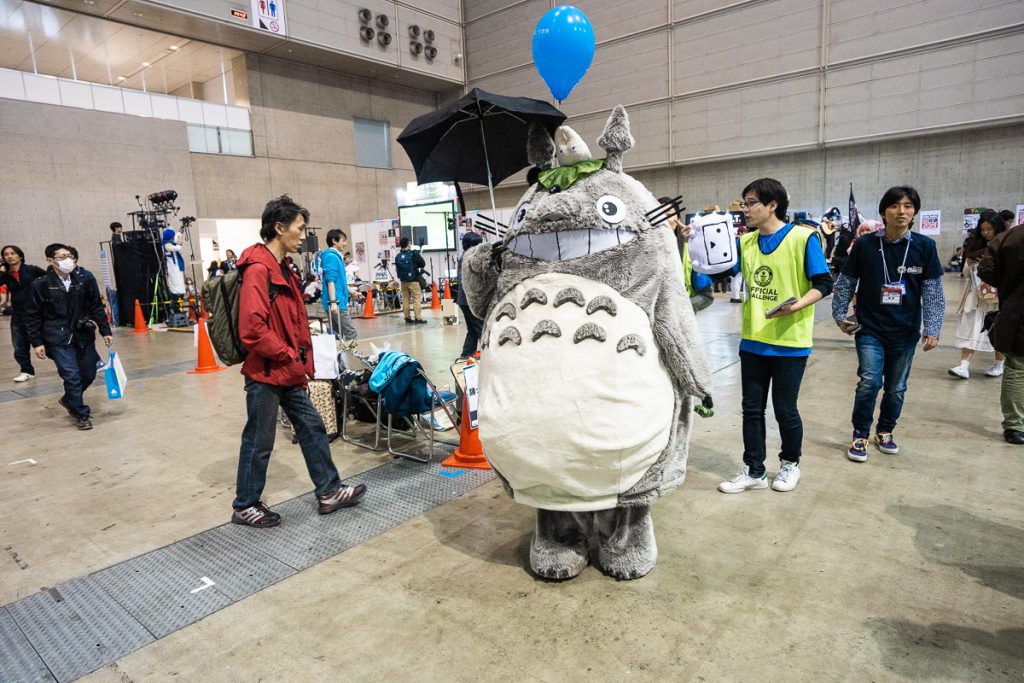
Over the years, Studio Ghibli has produced many films, feature and short, all of different genres, by different directors, and with varying quality. I am personally against ranked movie lists, as I don’t think rankings are proper purveyors of a movie’s quality against another.
Instead, I will give you my opinion on what Studio Ghibli movies I thought were best, and because not everyone can sit and watch every single movie from the studio, I’ll tell you the top few you should consider for a start, to at least give you an idea and then you can go ahead and watch their remaining works.
THE POPULAR STUDIO GHIBLI MOVIES
These are the Studio Ghibli movies you’ve likely heard about, that every list will mention, and that are popular with fans and casuals alike.
MY NEIGHBOR TOTORO (1988)

In 1950s Japan, Satsuki and Mei move to the countryside with their father to be closer to their hospitalized mother. One day, Mei comes across a long eared creature which she follows to the forest. There she meets Totoro, a forest spirit. From that day on, they spend their time surrounded by magical creatures in the woods.
WHY IT’S WORTH IT
My Neighbor Totoro gives off the impression of being a simple, childish movie. It’s more than that. It portrays childhood through its joyful moments, its scary moments, the obliviousness and naivete of it all. It’s an extremely moving film about the lengths at which family bonds can bring someone to overcome those aspects of their childhood.
TRIVIA AND FAN THEORIES
- Satsuki and Mei are said to already be dead because at the end of the movie they are seen outside without a shadow.
- The Cat Bus is said to connect to living world and the afterlife. In the movie it seemed like all trees avoided the Cat Bus but in fact, the Cat Bus may have been a spirit.
PRINCESS MONONOKE (1997)
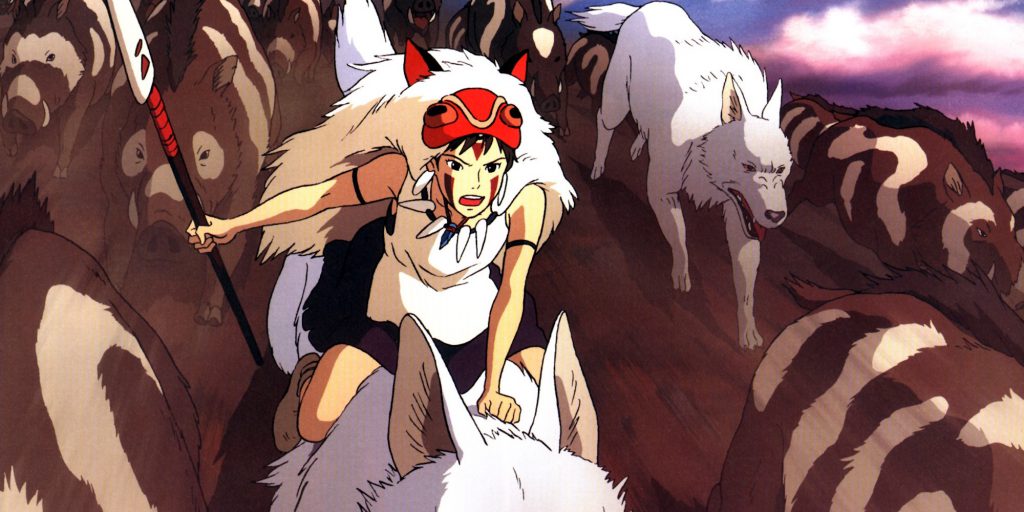
After killing a demon boar to protect his village, prince Ashitaka is cursed by the dying beast, giving him powers, while slowly draining his life. In order to find a cure for the curse, Ashitaka is instructed to travel westward, where he arrives at Tatara, the Iron Town. He soon finds out the town is in the middle of a conflict between Lady Eboshi, the town’s leader, who is in favor of using as much of the forest resources, and San, a human raised by forest spirits, and the forest spirits themselves. Ashitaka takes on the task of bringing harmony between the two parties.
WHY IT’S WORTH IT
Princess Mononoke is probably the Ghibli film I have watched the most often. It’s a beautifully animated and cinematographed fantasy, and a powerful call for a more thoughtful use of natural resources at the personal level, as well as at a community level.
TRIVIA AND FAN THEORIES
- The bandages may have symbolized leprosy, which is very discriminated against. Tarata Factory was a way for Eboshi to integrate the sufferers into society.
- Before Princess Mononoke, around the late 1990s, Studio Ghibli earned a lot in profit so they decided to make the movie, instead of paying a lot of taxes.
- Hayao Miyazaki imagined that Kodama (コダマ) is a young Totoro.
- When Princess Mononoke was almost finished, Hayao Miyazaki came to Toshio Suzuki and said “I want to change the movie title to Ashitaka Sekki (アシタカ聶記, The Legend of Ashitaka)” However, Suzuki Toshio felt that Princess Mononoke was better and decided not to change the name without telling Hayao Miyazaki.
SPIRITED AWAY (2001)
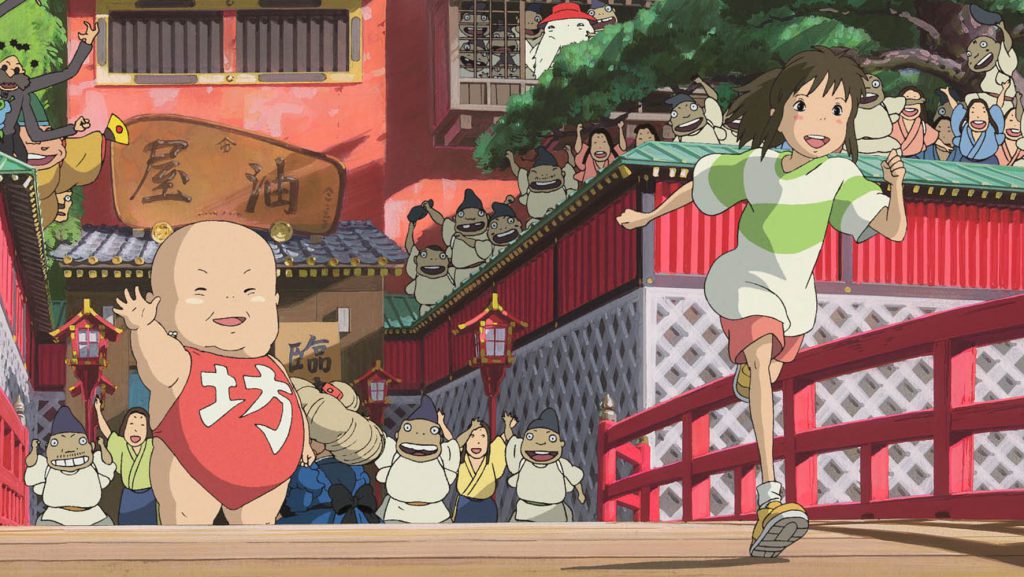
10-year old Chihiro, who is a spoiled and poorly-behaved child. On the way to their new house, she and her parents discover an abandoned amusement park and decide to have a look, to the discontent of Chihiro. Chihiro quickly realizes as she ventures through the park that there is an unnatural aspect to it, as she notices ghosts, and her parents are turned into pigs. She has gone into the spirit world and is now trapped and has to live and work in the spiritual world.
WHY IT’S WORTH IT
Spirited Away is a truly magical film, and a masterpiece of modern cinema, and a worthy Academy award winner. Spirited Away is what made most people aware of Hayao Miyazaki and Ghibli in the west. Spirited Away is a surrealist, weird, fast, funny, and extremely satisfying film.
TRIVIA AND FAN THEORIES
- Because Miyazaki said in an interview “Talking about the social issue that most symbolizes the present, I think it’s the sex industry”, Chihiro is believed to represent sex workers.
- When Chihiro wrote her name on the contract with Yubaba, she made a mistake on the first character. It’s because she has already started forgetting her name.
*real name 「荻」野千尋
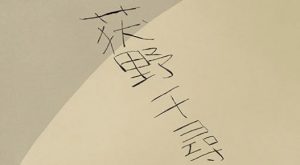
- No Face personified greed.
- Spirited Away has been modeled from Shiman Onsen Skizenkan and Kyufun in Taiwan.
LAPUTA: CASTLE IN THE SKY (1986)
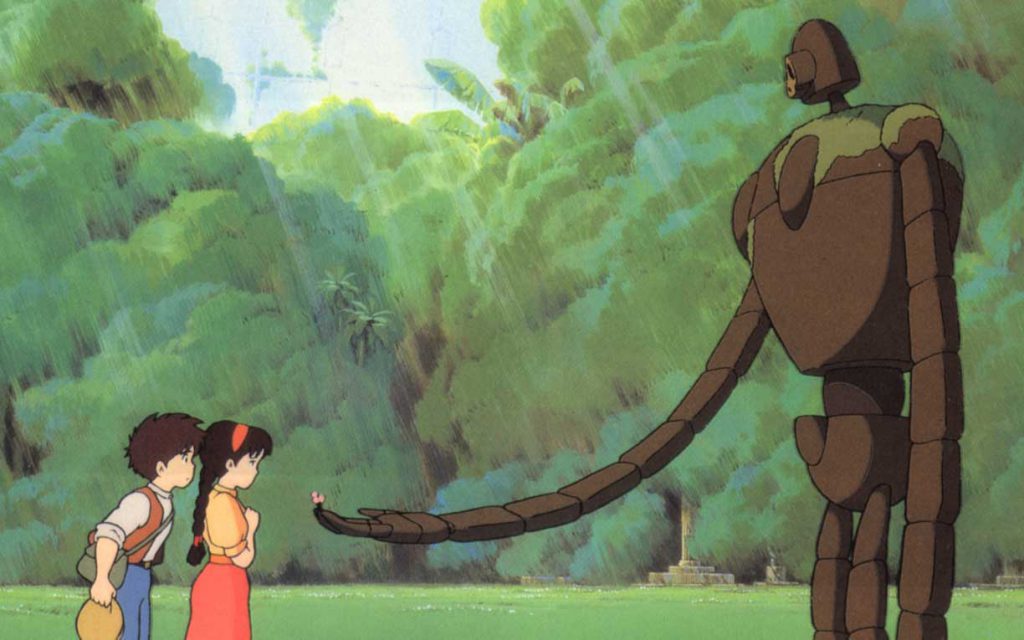
In a cyber punk-is world, legends speak of a floating island in the sky called Laputa, said to contain unimaginable treasures. Sheeta is an orphan girls who is being hunted because of her necklace, which supposedly can lead the way to Laputa. One day, as she’s being chased, Sheeta is saved by Sazu, a miner apprentice who dreams of finding Laputa. Together they go on a journey to find the island.
WHY IT’S WORTH IT
This is the first official Studio Ghibli movie. While that shows, as it’s not as detailed and well done as the following ones, Laputa is a great action-adventure film, often referred to a Japanese anime version of Star Wars.
TRIVIA AND FAN THEORIES
- The word ‘Balus’ came from ‘bans’ in Turkish which means ‘peace’.
- Laputa has two endings. The one which is the fan-favorite was on air on TV just once and there was a picture of Pazu who came across Sheeta and hug her.
- The idea of Laputa came from Gulliver’s Travels which Hayao Miyazaki has said he loved. He had been wondering how the world looks like behind the crowd.
- Until the end, Hayao Miyazaki couldn’t pick the title between: Tenku no Shiro Laputa (The Castle of the Broad Sky Laputa) or Fushigi na Shiro Laputa (The Wandering Castle Laputa).
HOWL’S MOVING CASTLE (2004)

One day, Sophie, a normal girl, who leads a normal life and works in a hat shop, is cursed by a witch after an unfortunate encounter. As a result of the curse, she is transformed into an old woman. In order to put an end to her curse, she sets one an adventure to find Howl’s castle, a moving mobile castle said to belong to the evil wizard.
WHY IT’S WORTH IT
How’s moving castle is a fantasy that experiments with the feel of a dream. Things that may seem logical are not, and what you expect is not what you get. While it’s not his best film plot-wise, it’s a welcome attempt for Hayao Miyazaki to exhibit how imaginative he can be.
TRIVIA AND FAN THEORIES
- The original story came from the book Howl’s Moving Castle written by Diana Wynne Jones.
- Sophie’s hair became white due to the illness of the author herself.
- There is a fighting scene that doesn’t exist in the book. Hayao Miyazaki added this scene to portray the fight for love.
- Witch of the Waste looked for the heart. It was simply because she fell in love with Howl.
- On the last frame of the movie, Hayao Miyazaki noted “However, the war won’t end soon”
- The reason why Howl’s castle was moving was that he tried to run away from girls who loved him.
- Calcifer was the prince of the stars.
- In the original story. Howl and Sophie were both dead and went to heaven together.
THE LESS POPULAR STUDIO GHIBLI MOVIES
These are less popular titles, but in some cases, superior to the ones above. Studio Ghibli has produced many movies, multiple of those before Studio Ghibli were popular overseas, meaning some have not had the notoriety they deserve.
GRAVE OF THE FIREFLIES (1988)
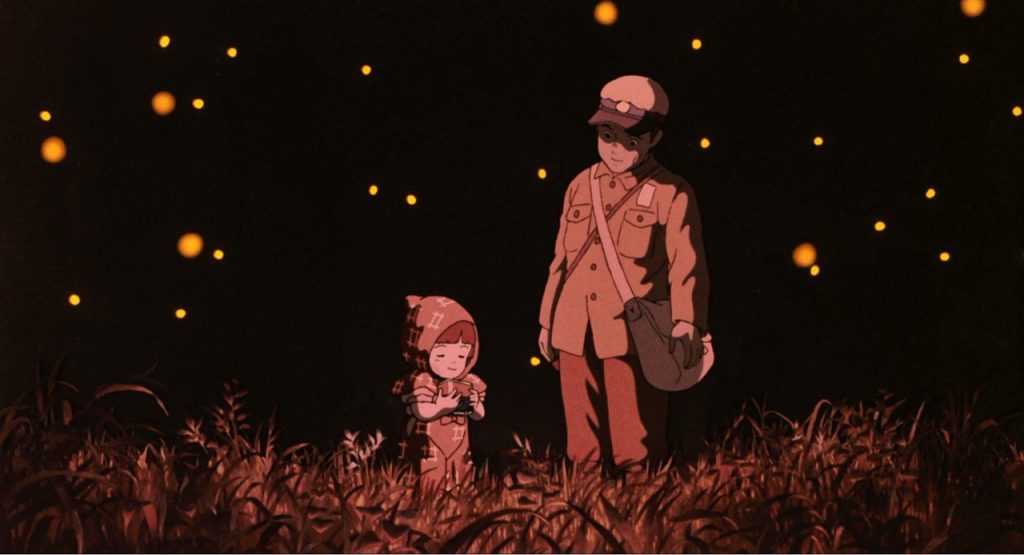
In 1945, as Japan suffers constant bombardment from the Americans, destroying the entire country, Seita and Setsuko lose their home and their parents. Orphaned and with nowhere to live, they are forced to travel around the country for survival, where they are surrounded by death, starvation, disease, and human cruelty.
WHY IT’S WORTH IT
This is Isao Takahata’s first movie as a director for Ghibli, and is always mentioned among any list of best written anime movies, and saddest anime movies. This movie is a tearjerker. While many films portray way from the fighter’s perspective, this one show you how hellish war affects the lives of everyday people. It shows a human perspective, and moments of laughter, and joy, which makes the not so joyful moments hit even harder.
TRIVIA AND FAN THEORIES
- The original story came from the book called Grave of The Fireflies. Like the book, the movie was also based on the true story of the author Akiyuki Nosaka.
- Setsuko’s voice actor was Ayano Shirai who was only 5-year-old when Grave of The Fireflies was made. However, she has been missing for years.
PORCO ROSSO (1992)
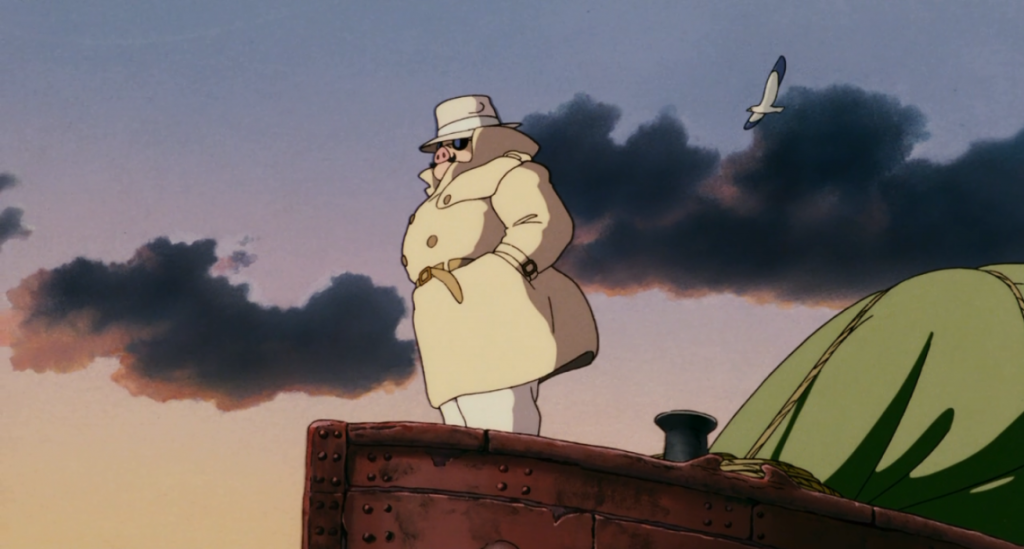
Years before the start of the story, veteran WWI fighterpilot Marco Paggot was cursed, giving him the face of a pig. He now lives under the name Porco Rosso and lives a solitary life as a freelance bounty hunter protecting civilians from sea plane pirates. The pirates hire an American ace, Curtis, who is jealous of Porco because Gina, the woman he loves shows more attention to him. Curtis tracks down Porco and shoots him down. Porco, surviving the attack continues his trip by train to his mechanic to have his plane fixed and fight Curtis anew.
WHY IT’S WORTH IT
It’s often said that the character Porco Rosso is Miyazaki himself. Considering his love of flying, and the parallels behind the name Ghibli being an Italian WWII plane, and Porco Rosso himself being Italian, those links can be understood. This movie is unlike his other movies, and here Miyazaki seems to pay an homage to Hollywood’s wartime adventure films, and has more obvious adult themes than his other movies.
TRIVIA AND FAN THEORIES
- Hayao Miyazaki loves to have airplanes crash. However, for Porco Rosso, one of the sponsors was an airplane’s company so he couldn’t let the airplane falls and was frustrated about it.
- In Japanese, the title is 紅の豚 which means Red Pig.
- Because Hayao Miyazaki always wants to make movies for kids, he was very upset with himself making Porco Rosso because this movie was reflected by his own hobby.
- Everyone wonders if Porco could be a human human again and no one knows the answer. But Hayao Miyazaki’s said he couldn’t.
POM POKO (1994)
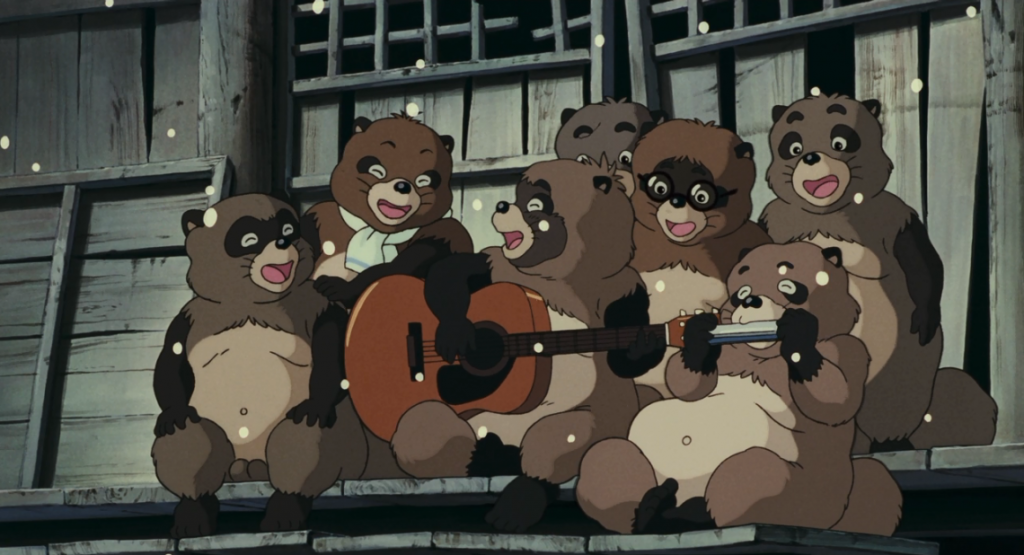
Faced with the growing threat to their habitat that poses the growth of Tokyo, a group of tanuki decide to fight for their homes. Unknown to humans, tanuki are intelligent creatures with the ability to speak, make music, and walk on two legs through transformation. To fight for their homes, two rival clans of tanuki join forces against mankind in the Pom Poko war, in an attempt to make mankind see nature for its beauty.
WHY IT’S WORTH IT
Pom Poko is another film by Isao Takahata. It’s a commentary on society, the environment, with fun, odd, and sometimes sad tones, mixed with adventurous animation.
TRIVIA AND FAN THEORIES
- Pom Poko was based on the Edo ear when people believed that raccoons could use magic.
- It’s said the story of Pom Poko symbolizes the Second World War between the USA and Japan.
THE TALE OF PRINCESS KAGUYA (2013)

One day an old bamboo cutter and his wife find a tiny girl inside a glowing bamboo stalk, next to a sizable amount of gold. Using the fortune he found, as she grew older, the bamboo cutter buys a villa in the capita and pays for tutors to transform the girl, named Kaguya, into a refined lady. As rumors of her beauty spread around the country, wealthy suitors show up one after another, competing for her hand. Kaguya, however, wishes that they could all return to their old lives in the countryside, and that she could be with Sutemaru, the one she truly loves.
WHY IT’S WORTH IT
This movie, by Takahata was his last before he passed away. It was nominated for Best Animated Feature at the 87th Academy awards, and in my opinion, deserved to win. It’s a gorgeously made film with a calligraphic style and a watercolor palette. This is a slow-paced, melodramatic film, unlike anything Ghibli has ever made before. This is not a children’s film. It’s not action packed and requires patience, but is in its own good both a visual masterpiece, and thoughtful movie on the meanings of love, life, and death.
TRIVIA AND FAN THEORIES
- The Tale of Princess Kaguya was made for Seiichirou Ujiie who was president of Nippon Television Network Corporation. Although he was a stern person and people were afraid of him, he dreamed of asking Isao Takahata to make a movie for him. Once it was decided Takahata would make the movie, he spent years checking with Miwazaki, because he was too afraid to ask Takahata himself, if the movie was almost finished. In the end, the movie did not come out until after his death.
- The percentage of scenes which had to be recreated for The Tale of Princess Kaguya was 96%. (For Studio Ghibli, it’s between 10 to 20%)
- The Tale of Princess Kaguya is known for its beautiful visuals. The total number of drawings was 500,000. Three times more than The Wind Rises.
- Some of the music for The Tale of Princess Kaguya was made by virtual vocaloid Hatsune Miku.
- It took five years to make The Tale of Kaguya.
KIKI’S DELIVERY SERVICE (1989)
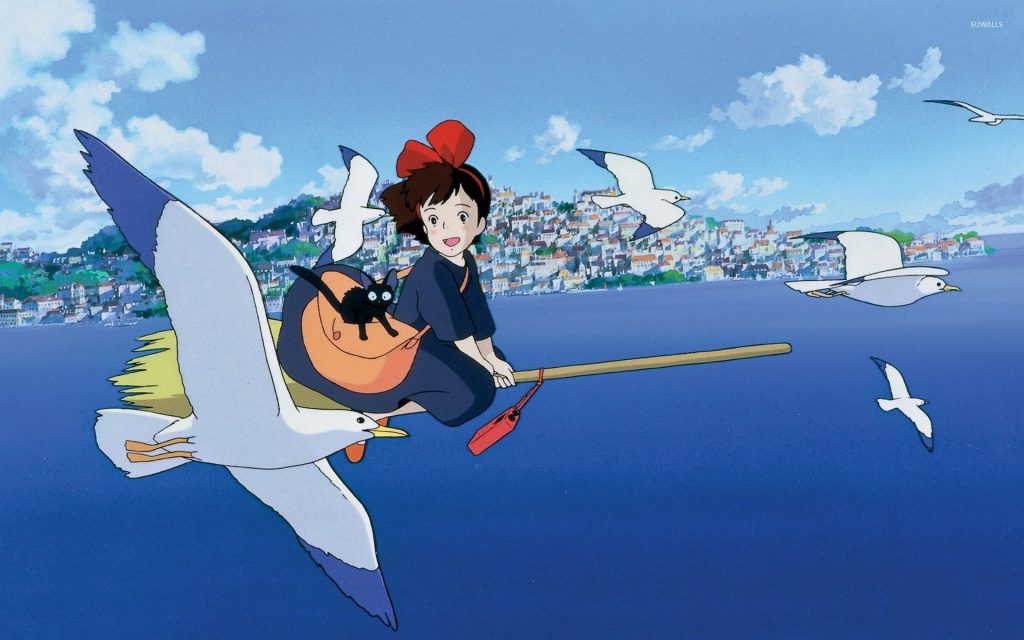
As per tradition, Kiki, having just turned 13, must leave her home and undergo a year of witch training. She departs with her cat Jiji and flies on her mother’s broomstick to start a new life in a towns he found near the ocean. She quickly find out life is not as easy, and people are not as friendly as she thought. After struggling with her decision to choose this town, and with no place to stay, she meets Osono, who offers her a place to stay after Kiki returned her pacifier. From then on, he real life, with new friends truly begins, so does her quest to find her true self.
WHY IT’S WORTH IT
Kiki’s Delivery Service is a wholesome coming of age story. It barely has any plot, but is given life by its portrayals of femininity, overcoming insecurities, becoming independent through a masterful showcase of “show, don’t tell”.
TRIVIA AND FAN THEORIES
- The original story came from the book called Kiki’s Delivery Service which was written by Eiko Kaguno.
- Kiki’s Delivery Service was the first Studio Ghibli movie which made a profit. If it weren’t for it, Studio Ghibli might have closed at that time.
- In the movie, Jiji suddenly stopped talking because Kiki lost her magical power.
- Studio Ghibli needed to have Yamato Transport Co., Led. as one of the sponsors because the word for delivery, “Takkyubin (Japanese title: Majo no Takkyubin)” is trademarked by the company.
MIYAZAKI AND TAKAHATA FILMS BEFORE STUDIO GHIBLI YOU SHOULD ALSO WATCH
While these are not technically Studio Ghibli movies, they are instrumental in the creation of the studio for both Hayao Miyazaki and Isao Takahata. Additionally, Nausicaä is arguably Hayao Miyazaki’s most powerful film.
NAUSICAÄ OF THE VALLEY OF THE WIND (1984)
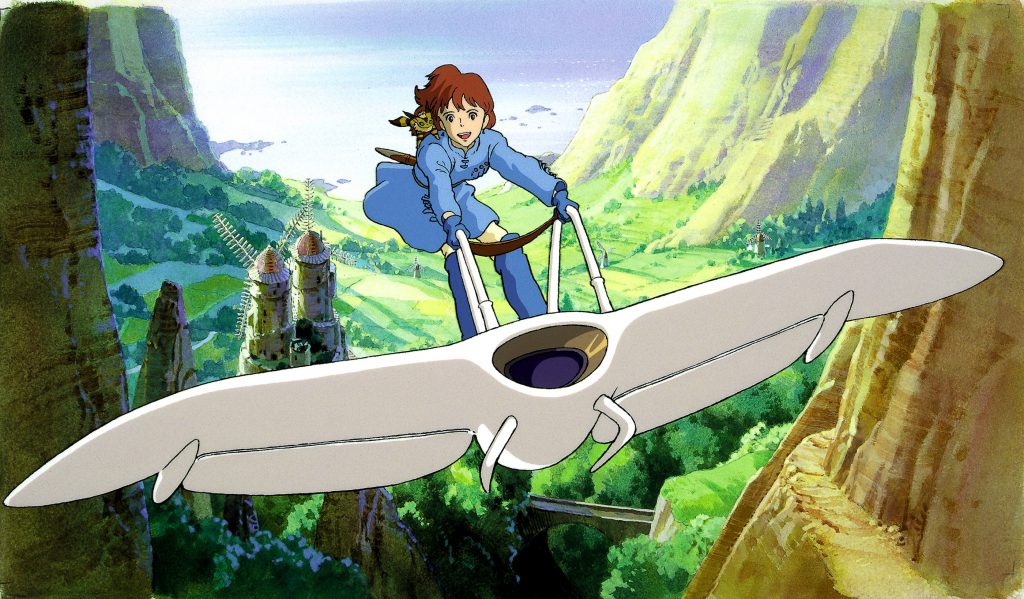
A thousand years after the apocalyptic event caused by the Giant Warrior, humans live in fear of the Toxic Jungle. The forest is made of poisonous plants and filled with giant insects, and with toxic air. Nausicaa is the princess of a small country known as the Valley of the Wind, which has managed to avoid the spread of the Toxic Jungle. One day, however, one of the Giant Warrior crashes into her country. The following day, soldiers from the powerful nation of Tolmekia invade the Valley of the Wind in an attempt to revive the warrior. Nausicaa vies to find a way to protect her people, as well as the Toxic Jungle, as she believes humans and insects can live alongside one another.
WHY IT’S WORTH IT
Nausicaä is the beginning of it all. It’s the movie that launched Ghibli, as well as the career of an unknown animator at the time: Hideaki Anno, who then went on to give us the often-considered best anime series of all time Neon Genesis Evangelion. Nausicaä is visually rich, with a rich narrative and strong environmental message. It’s way ahead of its time in terms of detail, and use of animation for such rich plot and messaging, and it brought us one of the best female protagonists to have graced the screen.
TRIVIA AND FAN THEORIES
- The original story came from the manga of Nausicaä of The Vallery of The Wind.
- Nausicaä isn’t set on the earth but on Mars.
- It wasn’t mentioned in the movie, but Nausicäa was a synthetic human. After the war, earth was totally polluted and wouldn’t be cleaned for many years to come. Humans decided to hibernate and created synthetic humans to wake them up.
LUPIN THE THIRD: THE CASTLE OF CAGLIOSTRO (1979)

After robbing a casino, Lupin III and Jigen find out the entire take is made up of counterfeit bills. To find the origin of these bills and put a stop to the counterfeiting, they go off to the tiny duchy of Cagliostro. There, they get caught up in a car chase between a bride and a black car. The bride hands them a ring before being taken captive, increasing Lupin’s interest in the odd affairs going on in Cagliostro.
WHY IT’S WORTH IT
This is Hayao Miyazaki’s first ever feature film as a director. It’s what kickstarts his career. Unlike most of his well-known films, this is based on set characters with already detailed personalities from the manga by Monkey Punch, who recently passed. It gives off more of a feel of an action-adventure live action film, a la Indiana Jones, than an anime. It’s fun and action packed.
TRIVIA AND FAN THEORIES
- Because Hayao Miyazaki made the TV series of the second season of Lupin the third, the character in the movie The Castle of Cagliostro looks like his version of the series. This is why the jacket of Lupin is green, not red like later.
- Hayao Miyazaki only had four months to make The movie Lupin The Third: The Castle of Cagliostro. At that time, he said: “It was the first time that I knew my physical fitness limit.”
- Because Hayao Miyazaki wanted to make Lupin as a kind thief man, he decided the age of Lupin to late thirties. This is why Lupin was called “ojisan” (old man) instead of “onisan” (big brother).
- In the movie, there are some old characters from Hayao Miyazaki’s previous movies. For example, Future Boy Conan.
STUDIO GHIBLI MOVIES: MORE THAN THE JAPANESE DISNEY
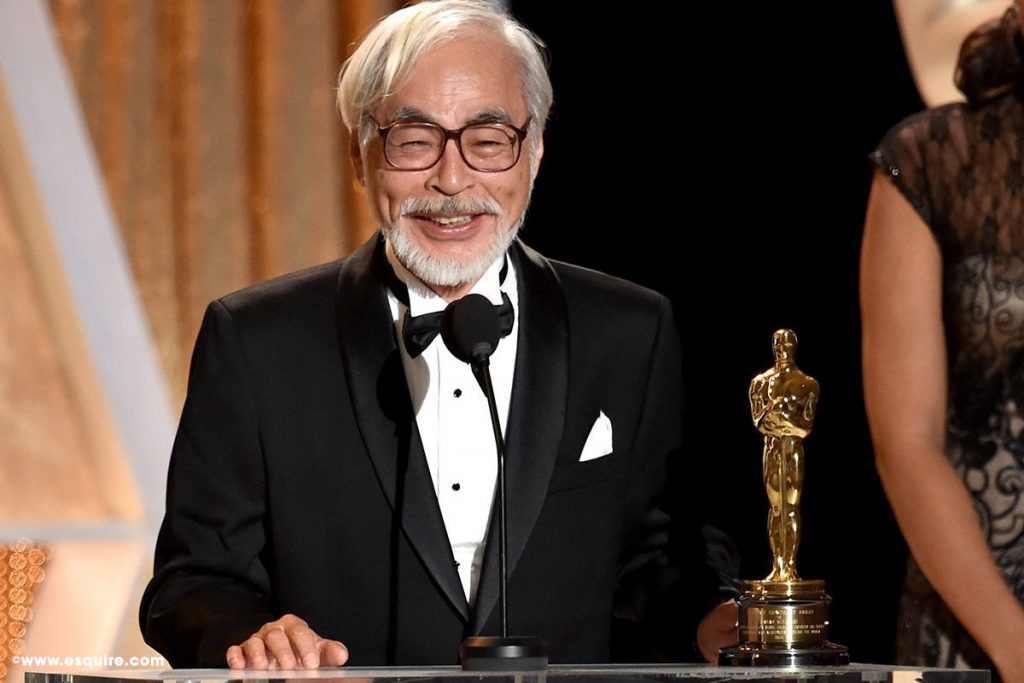
Ghibli is very often reffered to as the “Japanese Disney” which always angered me. While Disney, especially in more recent years has come good, mostly though it’s subsideries, it had never achieve the level of sophistication that Studio Ghibli films have exhibited from the very first one.
Studio Ghibli films are at their best multifaceted, layered commentaries on society. They are driven by strong, complex characters, who are often strong female leads, and whose behaviors and thoughts we can relate with. They portray the best of humanity, along with the worst of it, all the while, not shrugging off the quality of the animation, character design and cinematography, like so many movies trying to make a point do.
With Miyazaki’s retirement, Isao Takahata’s Passing, and Yonebayashi’s departure, Ghibli will no doubt not be exactly the same, but as long as the integrity of the studio’s philosophy remains, I’m sure we can expect more amazing films in the future.

